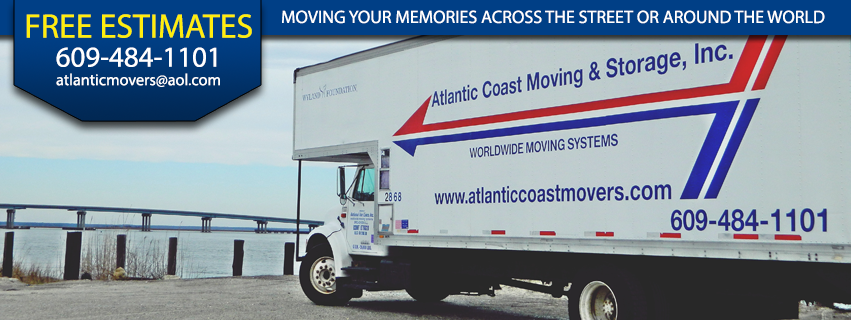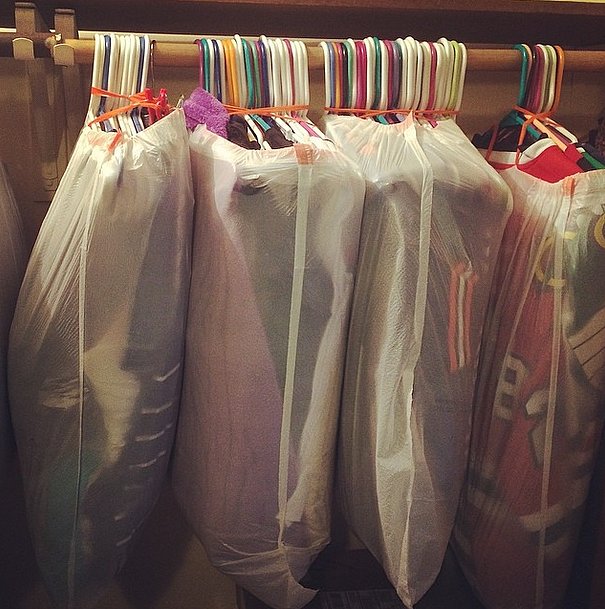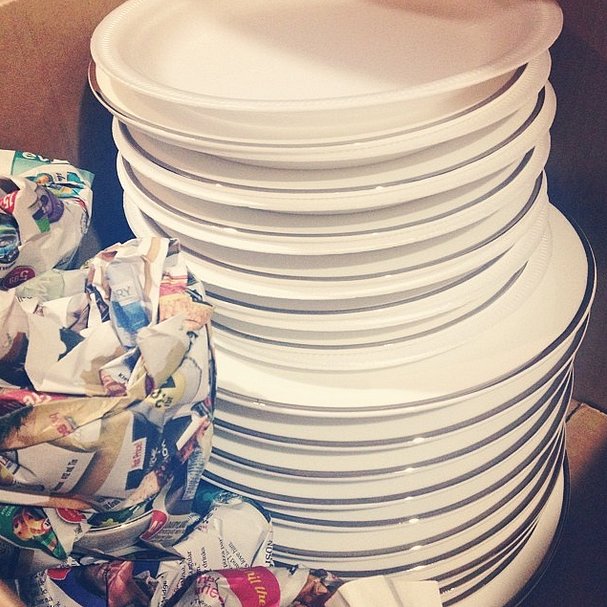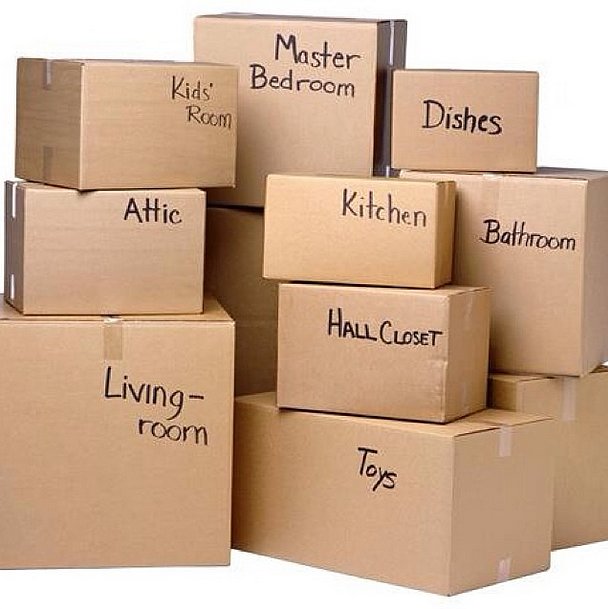When your moving date creeps closer and closer, the mere thought of packing up can be daunting. Putting all your belongings into boxes just so that they can be taken out again is nobody's favorite activity, so we found some amazing moving tips that will make going to a new place easier than you ever thought possible. Check out these ingenious moving hacks below.
1. Slide clothes on hangers directly into garbage bags.
Unpacking will be a breeze.
Source: Instagram user manda_gee
2. Put cotton balls in your makeup compacts so they don't break.
They act as a cushion inside of fragile powder cosmetics.
3. Use toilet paper rolls to organize your cords.
Keep wires organized by wrapping each cord up and stuffing it inside an empty roll.
4. Take pictures of your house before you move in.
If you're a renter, make sure you document exactly how your house looks when you move in. You want that deposit back!
5. Wrap breakable dishware in your shirts.
Not only are you saving on bubble wrap, but you're also packing multiple items at once.
6. Use Unpakt to save money.
This awesome website will compare all of the movers in the area to help you find the lowest cost.
7. Cover all bottles of liquid (shampoo, cleaning supplies, etc.) with plastic wrap before putting the top on.
Avoid messy explosions.
8. Color-code your boxes.
You will know exactly where everything goes.
9. If your painter's tape is dried up, put it in the microwave for a few seconds.
It will become sticky again.
10. Use suitcases for your heaviest items.
The handles and wheels will make for easy transportation.
11. Cut handles into the sides of cardboard boxes for easy lifting.
All you have to do is cut a rectangular shape on either side of the box.
12. Pack a separate small bag with all of your basics.
Chances are you won't unpack everything in one day, so make sure you have everything you need for one night easily accessible.
13. Fill nail holes with toothpaste.
It's the quick and cheap way to cover up all of those holes. Check out the video tutorial below.
14. Change your address in advance.
Make sure to take care of this pesky chore at least two weeks before move-out.
15. Defrost your fridge a day before moving out.
Avoid all kinds of leaks and nasty smells by doing this at least a day ahead of time.
16. Keep track of your moving expenses; some of them are tax-deductible.
Move now, save money later.
17. Stack plates with Styrofoam plates in between one another.
It's an easy and cheap way to make sure your plates don't break.
Source: Instagram user ashley2563
18. Roll up your clothes.
Instead of folding clothes, roll them all up to save lots of space.
19. Wrap a rubber band around your doorknob so you don't get locked out.
Wrap around one doorknob, then cross it over to the doorknob on the other side so that the lock is blocked. When you are going in and out of your house, you won't have to worry about being locked out.
20. Put towels underneath heavy furniture to avoid ruining floors.
The furniture will also slide away very easily.
21. Label your boxes on the side, not the top.
When you stack them, you will always be able to see what's inside.
Source: Instagram user major1move
22. Use sandwich bags for small important items like screws.
When you go to put a bed frame or bookshelf back together, they'll all be in the same place.
23. Find free moving boxes on the Craigslist "free" section.
You can also ask for boxes at local stores; they often have lots of leftovers.
24. Make sure to use the Moving Day app.
This app will make sure that you stay superorganized on your busy moving day by helping you catalog the things you pack. It also has a built-in bar code scanner and label maker so that you can keep track of all of your possessions.
Source: https://www.popsugar.com/smart-living/Moving-Hacks-Make-Packing-Easy-35362851
http://atlanticcoastmovers.com/24-ingenious-moving-hacks-make-packing-painless/





 As soon as you learn for sure that there’s a residential move waiting for you in the upcoming months or weeks (or days!), you need to start making some important decisions that will determine just how successful your move turns out to be. There isn’t any time to lose – each case of unnecessary procrastination will only bring higher levels of stress later on when Moving day knocks on your door.
As soon as you learn for sure that there’s a residential move waiting for you in the upcoming months or weeks (or days!), you need to start making some important decisions that will determine just how successful your move turns out to be. There isn’t any time to lose – each case of unnecessary procrastination will only bring higher levels of stress later on when Moving day knocks on your door.


